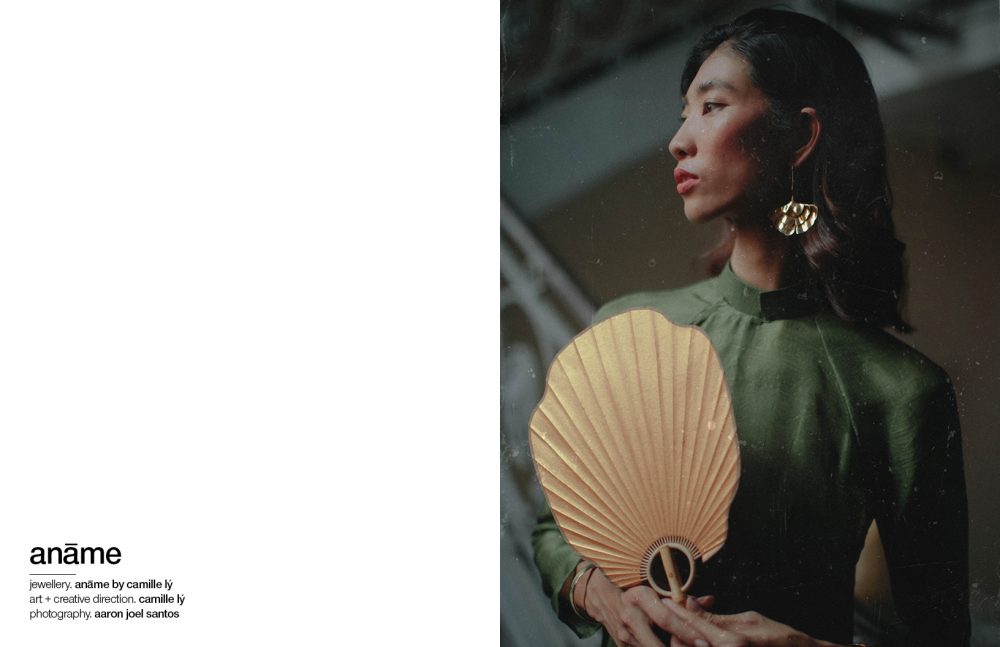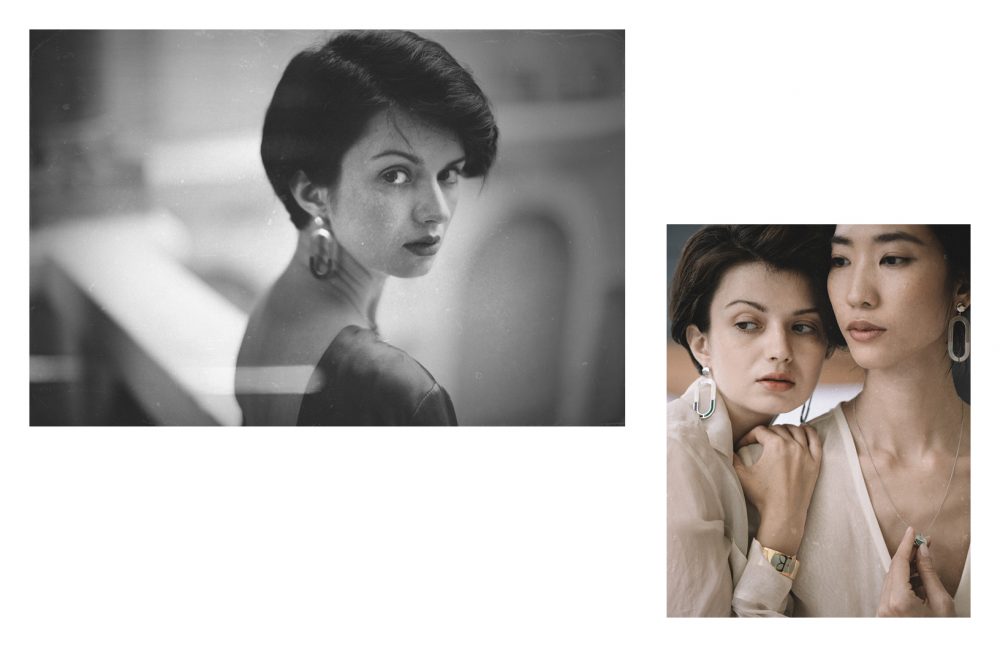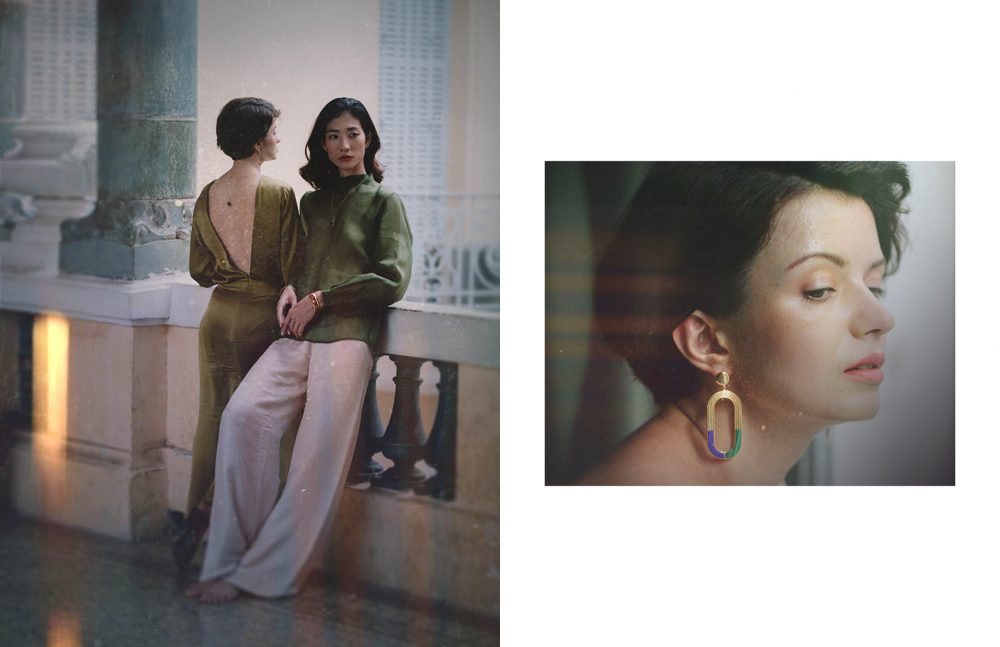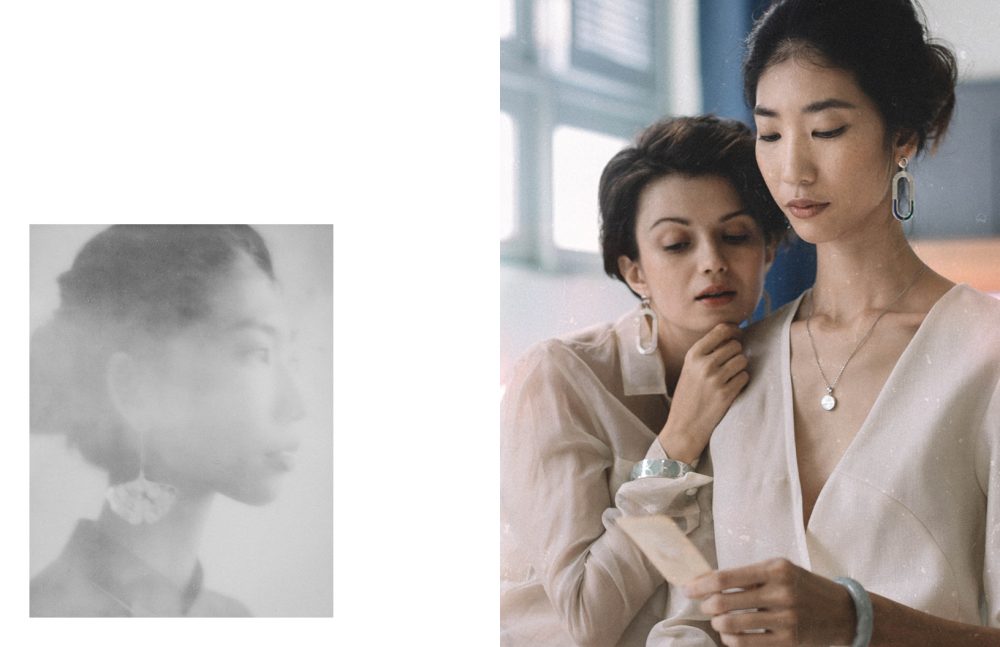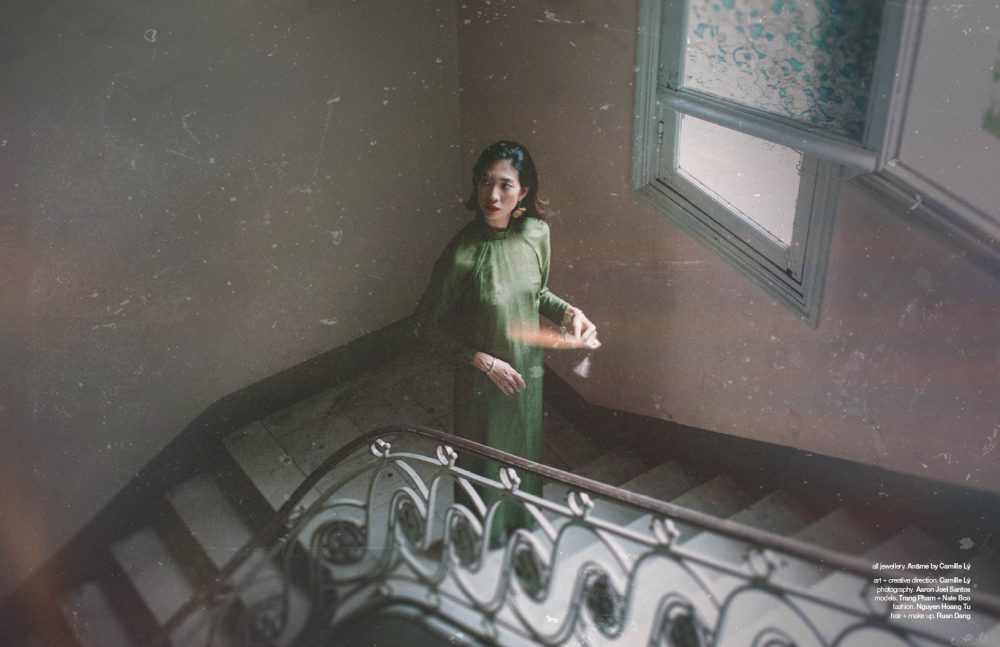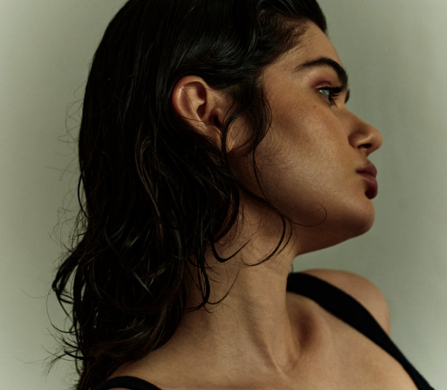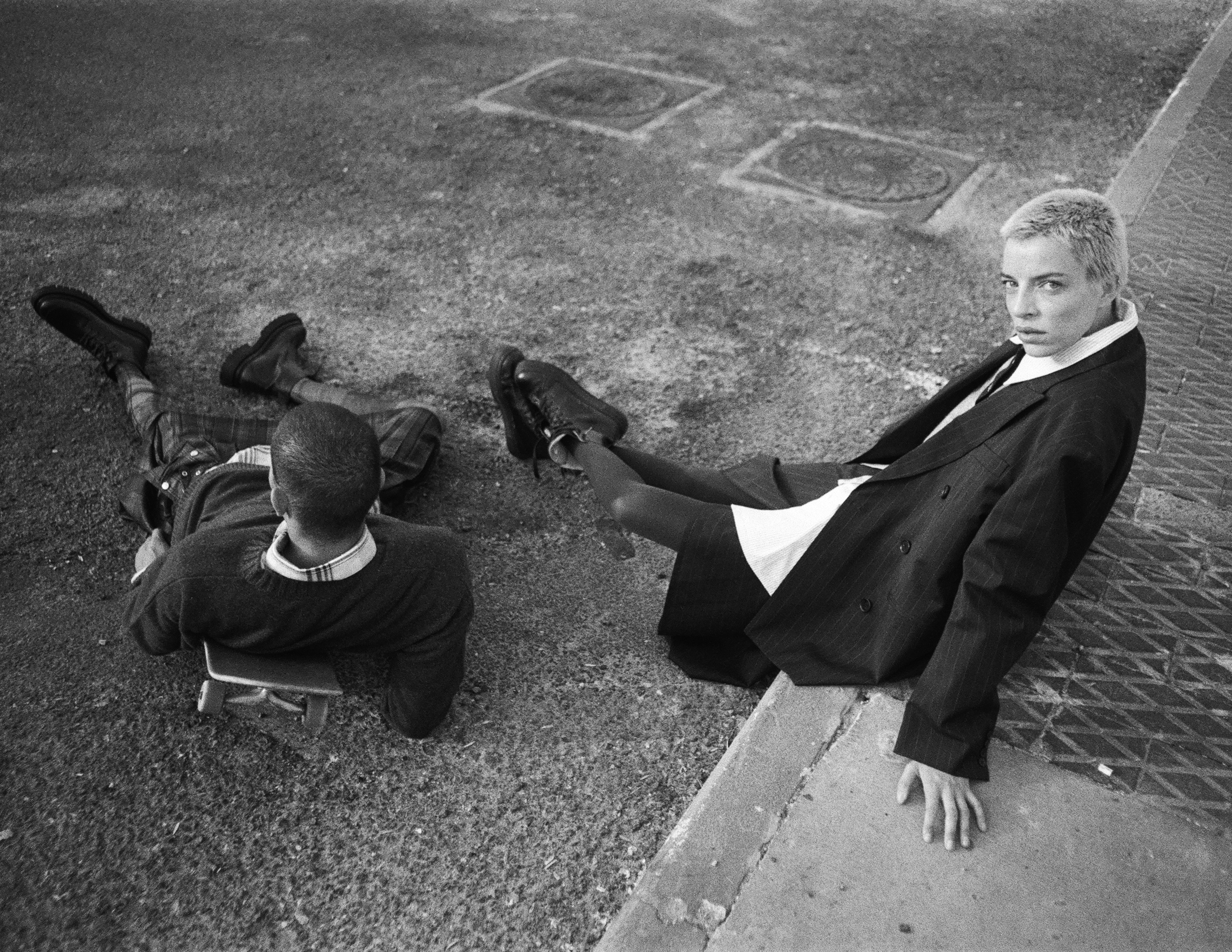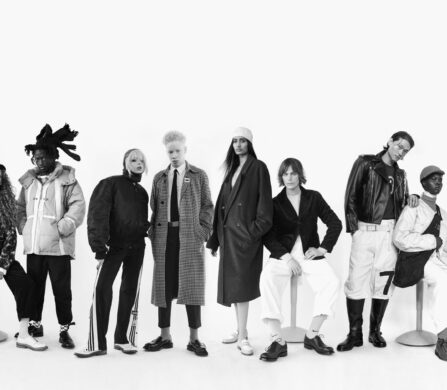Drawing inspiration from her upbringing between Europe and South-East Asia, jewellery designer Camille Lý presents Anāme — a lifestyle brand celebrating pluriculturalism in fashion. Recently launched in Europe and the United States, Anāme embraces different heritages and cultures to create intimate and elegant pieces — each with its own particular story.
The cosmopolitan and sophisticated designs of Anāme reflect the personality of its creator to perfection. Drawn to artistic creation from a young age, prior to launching her own brand, Lý had already made a name for herself as a photographer and a creative director. Highlighting the brand’s ethos, a unique understanding of details and life lies in Lý’s art. Here, Schön! speaks exclusively to the designer to discuss her love for details, her understanding of identity, and how Anāme was born.
You have worked as a freelance photographer and creative director before launching Anāme. What drew you to art and creativity in the first place?
When I was a child, my grandfather took me to his Calligraphy Club in Hanoi to encourage me to write “beautifully.” This art of beautiful hand-writing has a long tradition in Chinese and Vietnamese culture. Especially during Lunar New Year, people would offer Calligraphy with meaningful words to each other to wish luck and prosperity for the New Year. I was completely fascinated, watching him moving his strokes across the pages, it seemed so effortless yet each movement was well-planned and precise, an intimate expression of the calligrapher. Through him and his club, I discovered what personal expression could be like. My grandfather taught me a great deal about personal expression and how to “materialise” your own thoughts and feelings, no matter what medium you choose. As an integral part of the Vietnamese lifestyle, whenever he needed accessories for his calligraphy, he would also take me to visit local craft workshops specialising in lacquer painting or pottery. This is a long tradition in Vietnamese craftsmanship.
Later in life, due to my parent’s work, I was moving so often that I ended up spending most of my time with my books, pencils, and my old Pentax that was always within my reach. So, although calligraphy and graphic design were my earliest artistic experiences, photography became my principal way of expression, the perfect medium to document a moment, a feeling. At the time, I was simply observing things around me, taking photographic notes, without really analysing anything. I was just shooting what I liked, collecting what would become memories and, later, the starting point of my inspiration for Anāme.
How did you get started in designing jewellery?
By complete chance. I had a ruby ring that my grandma gave to me when I left Vietnam for the first time. It was a really sentimental gift because she gave me something she’s been wearing since her marriage. It wouldn’t fit me back then so I kept this heirloom for the longest time in a little box until a friend and I attended a jewellery making and repair workshop that completely blew my mind. Not only did I fix my grandma’s ring, but by working the metal, I realised that I could apply pretty much all of my graphic design knowledge into pieces that I could then wear. I had just discovered a new form of expression, that was an eye-opening moment.
Somehow I got hooked and ended up taking more jewellery making courses. I really love the traditional process of jewellery making, how you can turn a raw piece of metal into a ring from a wire and how to work the raw stone until it becomes shiny and polished. Today, depending on the piece, the making process is different, we often design on the computer, print from the CAD version, make the mould and cast it. But a lot of things still require refined craftsmanship, especially because of my work with natural stones and the inlays in many of our pieces.
You live between Europe, Vietnam and Singapore. How does your lifestyle influence your pieces and the audience you aspire to reach?
I grew up and still live between many different places and, soaking up in different cultures first hand, in an authentic way. And at its core, Anāme is a celebration of the small “cultural” details that shaped me, consciously and unconsciously. For me, it’s a ginkgo leaf, a pattern on a tile, a door frame, details that I saw when growing up and that have real meaning to me and my family history. This lifestyle develops into the creation of personal symbols, that I use to tell my story.
Of course, I design those pieces with a specific intent, but it isn’t necessarily communicated, and that’s okay because I believe that my conceptual and symbolic approach infuses those pieces with a fundamental elegance and a bit of mystery too! Finally, I believe my work can strongly resonate with what I call “Global citizens,” pretty much a lady of any age, with a truly “modern mindset,” of curious nature, outward-looking and appreciative of heritages and values different than hers.
Your L’Héritage collection is your personal concretisation of embracing both your European and your South-East Asian identities. Why did you choose pieces of jewellery to express such an intimate retrospection?
Growing up, I always felt the pressure of painfully choosing between being “European” or “South-East Asian” hoping to be fully accepted by both sides. It took me time to realise that I could be both happy to celebrate each facet of my culture and feel like I do not deny the other. When I started working on that theme, my pluricultural upbringing, I was already practising jewellery design, and I always felt like a piece of jewellery is probably the most intimate and long-lasting accessory one can have. It is to me, the perfect medium to share the celebration of my different cultures and memories.
The idea that one of my pieces could become one of those special heirlooms that are being passed down through generations, is very exciting. In Chinese or Vietnamese cultures, a piece of jewellery is often given to the bride during her marriage. My grandma gave me her own ring when I left Vietnam, it’s a very sentimental piece. When I designed the pieces for Anāme, I also wanted to incorporate some cultural meaning behind the pieces, like with the Secret Locket Necklace, which is designed as a reminder to keep your cherished memories close.
Your Summer 2019 lookbook has a very vintage and elegant look to it. What inspired you?
A large inspiration for this lookbook was the old photos on the walls that I could see at home when I visited my grandparents. They were like an invitation to notice what actually did not change over the times: the continuous mix of heritage and modern western cut clothes as well as the stunning elegance of the South East Asian women in those photos. I didn’t want to just display my designs, I wanted to treat them like they were memories, like they could belong to those walls.
So the sense of elegance I mentioned is very inspired by the common aesthetics of my family photos, and the way Vietnamese women have dressed since the early twentieth century, consisting of a mix of beautiful traditional dresses and modern looking western cuts. If you step in any home in China, Thailand or Singapore, you will witness the same elements amongst women on these photos: an excessive elegance and a proudness to display as much their heritage as their forward-looking and modern mindset, often expressed through Western clothes and accessories. Hence the natural choice of combining my jewellery with more traditional garments like the Áo Dài and a contemporary wardrobe, all designed by the amazing Vietnamese designer Nguyen Hoang Tu. I adore how he chose to work with traditional materials like silk to create a modern wardrobe, elevated by excellent craftsmanship.
This lookbook was shot in Saigon — now Ho Chi Minh City, Vietnam. You mentioned that what particularly appealed to you there was the old side of the city — its scents, its foods. How does this sensitive observation and understanding of details transpire into your pieces?
The places I lived in are often a very direct inspiration. As an example, my way to go about cities is generally the same, I wander on my motorbike, take snapshots of the city details, and inspiration comes up at each and every corner. Some will trigger an explosion of memories and sensations. These experiences translate directly into my designs. Eating a particularly sweet mango on a street corner in Saigon will easily trigger those sensations! Although I will completely indulge in those moments, then comes the work of chasing the essence of those feelings and boiling them down to a single detail, a personal symbol. And those usually become part of a design, like La Mangue d’Or.
Speaking of Vietnam, the designs of your line are crafted by local Vietnamese and Chinese artisans from ethically sourced materials. What motivated that choice?
My main motivation was to simply honour the traditional know-how of the South East Asia region in the most ethical and sensible way possible. Vietnamese and Chinese craftsmen are particularly skilled and experienced in producing beautiful and fine silk accessories. Thais are excessively talented with jewellery making. And to ensure ethically sourced stones, fair labour, environmental concern and social responsibility, I set on working only with accredited production studios. As an example, our Thai production studios are TMark bearers and members of the Responsible Jewellery Council. It also meant for me to mostly work with smaller production studios that I can visit anytime, and that I can develop a close relationship with.
How do you feel about the environmental impact of the jewellery-making industry nowadays, and did it influence the way you wanted to produce your own designs?
Finding environmentally friendly jewellery manufacturers was particularly difficult, I decided to avoid gemstones coming from conflict zones and work with manufacturers that were not part of organisations such as TMark and RJC. This meant that the available options for production were greatly reduced and some designs never went into production for those reasons. But, being ethical or technical, constraints are great drivers of creativity! As mentioned earlier, I personally visit each jewellery maker, stone cutter and silk workshop, to ensure the working conditions of their staff before committing to work with them. I drove a lot around Thailand and Vietnam for that specific reason. Finally, on the sustainability side, I would like to do more work with recycled materials, once I manage to find the right partner that I need for Anāme.
You seem to be a great observer, your collections celebrate the small cultural details of life-shaping identities and merge all the places and cities you’ve experienced in your life. What is the most important thing you want people to feel and think while wearing such personal pieces?
Looking at the same subject, we all see different things. So, although I design my pieces with intent and meaning, if a piece resonates with you, not for the meaning I gave it, but for the meaning that “you” find into it, there’s nothing more fulfilling to me as a designer. It means that you took this design and made it your own and that, in some ways, it empowers you, makes you feel better and stronger about yourself. And I can’t think about anything that could make me happier as an artist.
At its core, your art is about a poetic and minimalistic understanding of details and a great work of retrospection. Is there any upcoming project you are looking forward to and would like to share with our readers?
The current L’Heritage Collection is very much inspired by the cultures and visual elements that I encountered both in Europe and South-East Asia. I would say there are many architectural references in this collection. For the future, I would like to explore more elements from nature. The tropical garden of my grandparents is a great source of inspiration and I can’t wait to start developing new concepts around those memories.
To stay in the know about her latest creations, follow Camille Lý and on her website and Instagram.
This Schön! online exclusive has been produced by
all jewellery. Anāme by Camille Lý
art + creative direction. Camille Lý
photography. Aaron Joel Santos
models. Trang Pham + Nate Boo
fashion. Nguyen Hoang Tu
hair + make up. Ruan Dang
interview. Hugo Scheubel












